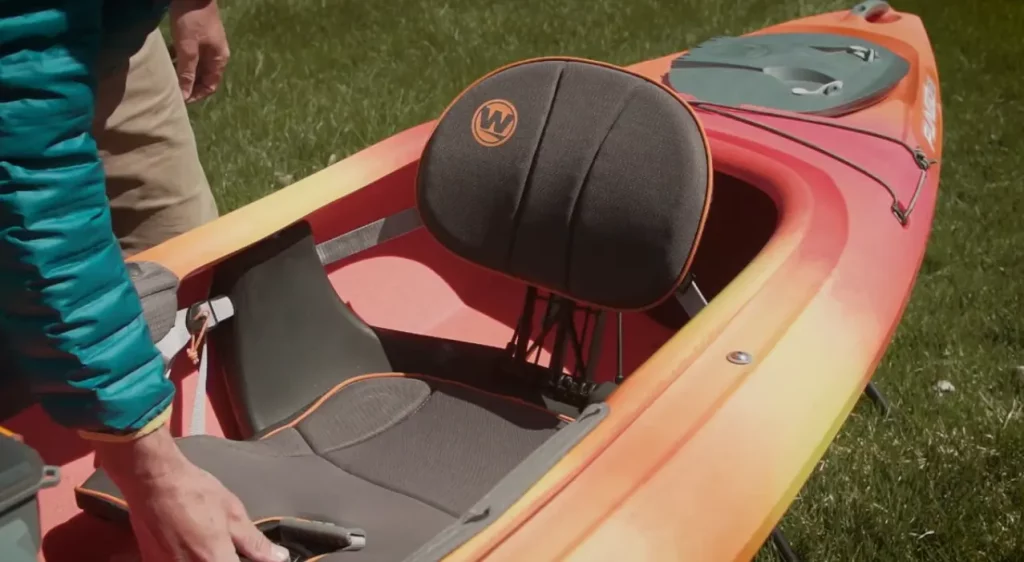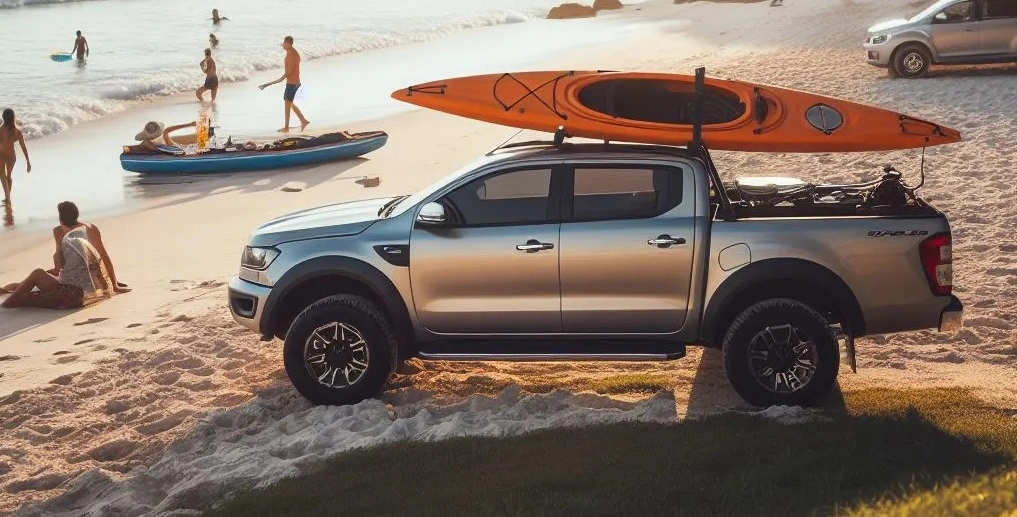The thrill of kayaking is undeniable. Gliding over water, exploring hidden coves, navigating rapids, or simply enjoying the tranquility of nature – kayaking offers something for everyone. But one common challenge many enthusiasts face is transportation. How do you transport a long, bulky kayak if you only have a 5-foot truck bed? This article dives into solutions and tips for transporting a kayak in 5 foot bed.
The Challenge: Bigger Kayak, Smaller Truck Bed

Most kayaks range between 6 to 14 feet in length. When confronted with a 5-foot bed, many would assume it’s impossible to transport a kayak. However, with some creativity and the right tools, it’s entirely feasible.
Overhang: What’s Acceptable?
If your kayak hangs out of your truck bed, the first question is: How much overhang is permissible? While laws vary by state or country, a general rule of thumb is that any load extending more than 4 feet beyond the rear of a vehicle should be flagged with a red or fluorescent flag during the day and have additional lighting at night.
Solutions for Transporting a Kayak in a 5-foot Bed
1. Bed Extenders
Advantages:
- Provides additional support for the overhanging portion of the kayak.
- Easily attaches to the truck’s hitch.
- Foldable designs available.
Considerations:
- Ensure it’s properly secured to prevent movement.
- Make sure the extender’s weight capacity matches or exceeds that of your kayak.
2. Roof Racks
Advantages:
- Utilizes the roof space.
- Suitable for multiple kayaks.
- Can be used for other equipment.
Considerations:
- Requires lifting the kayak overhead.
- Ensure it’s securely fastened to prevent accidents.
3. Truck Bed Racks
Advantages:
- Elevates the kayak above the bed, freeing up space beneath.
- Stable and can support heavy weights.
Considerations:
- Might be more expensive than other solutions.
- Ensure the rack is compatible with your truck model.
4. Trailers
Advantages:
- Perfect for those who frequently transport kayaks.
- Can carry multiple kayaks and gear.
Considerations:
- Requires additional parking and storage space.
- Make sure to follow local towing regulations.
Safety Tips
Regardless of the solution you choose, safety should always be paramount.
- Secure Your Kayak: Always double-check that your kayak is securely fastened. Ratchet straps are a popular choice due to their strength and reliability.
- Visibility: As mentioned, if your kayak extends beyond your truck, it should be flagged. This ensures other drivers are aware of the extended length.
- Regular Inspections: Before each trip, inspect your racks, extenders, or trailers for any signs of wear or damage.
- Drive Carefully: Remember, the added length or height can affect your driving. Be cautious, especially in windy conditions or when making sharp turns.
Preparing Your Kayak for Transport
- Empty the Kayak: Remove any loose items or gear from the kayak.
- Protect the Hull: Consider using a protective pad or foam blocks to prevent scratches.
- Balance the Kayak: When placing the kayak on racks or extenders, ensure it’s balanced to prevent any tilting during transport.
Conclusion
Transporting a kayak with a 5-foot truck bed might seem like a daunting task initially. Still, with the right equipment and a focus on safety, it’s entirely possible. Whether you’re heading to a serene lake, a flowing river, or challenging rapids, don’t let the size of your truck bed limit your adventures. With preparation and care, the world’s waters are within your reach. Happy kayaking!
Read more about kayaks:
- What to Wear for Kayaking in Summer
- How to Store a Kayak in the Garage
- What is a Skeg on a Kayak
- What is a Tandem Kayak
- How to Build a Homemade Kayak Launch
- How to Get in a Kayak
- What to Wear for Kayaking?
- How to Transport a Kayak Without a Roof Rack?
- How to Build a Kayak Rack for an RV?
- Are Inflatable Kayaks Safe?
- How to Build a Rack for Kayaks?
- Do Kayaks Have a Weight Limit?
- Wilderness Systems Pungo 120 Kayak Review
- Is it hard to kayak?
- How to Lock a Kayak?
- Where to Kayak with Manatees?
- Pungo 120 vs 125: Which is the Better Choice?
- Tips to Prevent a Kayaking Flip Over and Stay Safe
- What is a Good CFS for Kayaking?

Hi, I’m Steve, the passionate kayaking enthusiast behind Outdoor Bravo. As an avid adventurer and nature lover, kayaking has been a central part of my life for as long as I can remember. My love affair with the water began during my childhood, and it has only grown stronger over the years. From serene lakes to rushing rivers and even challenging ocean tides, I’ve navigated various water bodies, seeking new thrills and unforgettable experiences.
